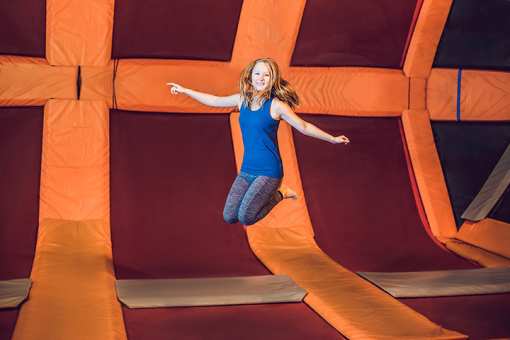Como-Harriet Streetcar Line History
To read A Brief History of Transit in the Twin Cities, click here.
Construction of the streetcar system in Minneapolis began in 1875 when the Minneapolis Street Railway built 4.37 miles of track beginning at Washington and Hennepin Avenues in downtown Minneapolis. The ten cars that plied these rails had a ten foot long passenger compartment that could hold fourteen passengers, had four wheels, weighed about a thousand pounds, and were drawn by horses.
In 1879, an independent company, the Lyndale Railway Co., later renamed the Minneapolis, Lyndale, & Minnetonka Railway Co., began operation of a three foot gauge line from Minneapolis to Lake Calhoun along Nicollet Avenue and 31st St. Short trains were pulled by two 0-4-2 type steam engines enclosed in streetcar-like wooden bodies. West of Hennepin Avenue, the line ran on a curving private right-of-way. In 1880, the line was extended to Lake Harriet and to Excelsior on Lake Minnetonka in July of 1882. In those early days of horse-drawn carriages and dirt roads, the lakes were popular resort and tourist destinations and the railway saw a golden opportunity to make money providing transportation to lake-goers.
The company, however, was never healthy financially, and a decline in lake tourist traffic brought about sale to James J. Hill's St. Paul, Minneapolis, & Manitoba, a predecessor of the Great Northern Railway, in 1886. The track was widened to standard gauge and extended to Hutchinson, but service from Lake Harriet to Hopkins was discontinued. Further financial pressures related to the unpopularity of steam locomotives on city streets prompted a thirty-year lease to the Minneapolis Street Railway in 1887. Service was further trimmed back to Lake Calhoun and the Lake Harriet- Excelsior trackage was abandoned.
In 1889, the first electrically powered streetcars were introduced to the Twin Cities. Small four-wheeled affairs, they looked very much like the horse-drawn and steam-powered cars they replaced. These new electric cars were superior to both. In 1891 the line was electrified and standard-gauged to Lake Harriet and the old steam trains were sold. A pavilion was constructed on Lake Harriet at W. 42nd St., and the line terminated at a loop there. Forty powerful carbon-arc lamps were attached to the trolley wire poles on the Lake Calhoun to Lake Harriet section as a scenic attraction.
With the lease of the steam line came its shops at 31st Street and Nicollet Avenue. The Twin City Rapid Transit Company, successor to the Minneapolis Street Railway, decided this was a wonderful shop location and made many improvements. Between 1898 and 1907, when the Snelling Shops in St. Paul opened, it was the main shop on the system, and many of the system's streetcars were constructed here.
Effective January 2, 1892, the Minneapolis Street Railway and the St. Paul City Railway began consolidated operations as wholly-owned subsidiaries of a new holding company, the Twin City Rapid Transit Company, generally known at Twin City Lines.
In February 1903, the pavilion on Lake Harriet was destroyed by fire and a new one was built and operated by the Park Board. TCRT constructed the Linden Hills station reproduced by the Museum at the W. 42nd St. crossing in 1900, replacing it in 1914 with the chalet-style structure that lasted until the end of streetcar service.
In 1904, TCRT saw an opportunity to develop the Lake Minnetonka area for the working and middle class public and to provide transportation for local residents. Much of the original steam railway right-of-way was repurchased, resurveyed, and regraded for high-speed operation. By 1906, double track was laid from the end of the Lake Harriet line to Excelsior. Steam railroad branch lines to Deephaven and Tonka Bay were acquired and incorporated into the new line. TCRT also maintained an amusement park on Big Island and a fleet of steamboats that provided service on Lake Minnetonka until 1926. One of these, the Minnehaha, has been raised from the lake bottom and is operated today by the Museum of Lake Minnetonka from the docks in Excelsior and Wayzata.
By the great depression, profits from the Lake Minnetonka line fell off enough that further operation was not warranted. Accordingly, in August 1932 the line was abandoned beyond Hopkins.
Operationally, the private right-of-way between the lakes hosted a number of different streetcar routes:
Starting in 1892, the "Lake Harriet" line from the Lake Harriet loop to the High Street loop (downtown) via Hennepin Avenue.
With the construction of the second Minneapolis-St. Paul link in 1898, the "Como-Interurban-Harriet" line from the Lake Harriet loop to Lake Como following Hennepin Avenue, 4th Street, 15th Avenue, Como Avenue, past the fairgrounds and through Como Park on private right-of-way, to downtown St. Paul. In 1909, service was extended west to a new loop at 44th Street and France Avenue, though it was still called the "Como-Harriet" line.
From 1902 to 1905, a Sundays and holidays-only special "Lake Harriet and Minnehaha Falls" line. Route unknown.
With the extension to Lake Minnetonka, the "Lake Minnetonka," "Tonka Bay," and "Deephaven" services were started from downtown Minneapolis to Excelsior, Tonka Bay, and Deephaven, respectively. The "Como-Harriet" line also ran supplemental service to Hopkins as the "Como-Hopkins" line.
Starting in 1910, service on the "Oak-Hennepin" line was extended to the Lake Harriet loop and renamed the "Oak-Harriet" line. In 1913 this was further extended to Xerxes Ave. and 50th St and renamed the "Oak-Xerxes" line.
Late in 1949, New York City investor Charles Green gained control of TCRT. Determined to squeeze dividends from a company that traditionally reinvested its profits in system improvements, Green discontinued the rebuilding program, trimmed maintenance to a minimum, laid off hundreds of employees, relentlessly cut schedules, and announced a goal of complete conversion to buses by 1958. His heavy-handed policies so alienated the public that in 1951 he was ousted and control passed to his local partner Fred Ossanna. Mr. Ossanna introduced further economy measures and continued to reduce service as patronage dropped. A Los Angeles expert on conversion to buses, Barney Larrick, was hired and the system was completely converted by 1954. Several years later it became known that Ossanna and associates had pillaged TCRT for illegal personal profit. They were tried and sentenced to prison terms.
The remaining private right-of-way between the lakes lasted until the very end of streetcar service. The 3.3 miles from Brookside Avenue in Edina to Hopkins were removed in 1951. The rest resisted abandonment until the end of streetcar operations in 1954. The right-of-way sat idle until 1970 when the Minnesota Transportation Museum leased it from the Minneapolis Park and Recreation Board and began rebuilding the line.
Service resumed in 1971 with TCRT Streetcar No. 1300 operating on one block of track connecting W. 42nd St. to the car barn at Linden Hills Parkway. With no trolley wire, a gas-powered trailer provided electricity until the overhead wire was installed in 1973. The line was extended, to the William Berry Parkway bridge in 1972, beyond the bridge to the end of the old right-of-way in 1973, and to the current northern terminal on the southeast shore of Lake Calhoun by 1977. Additional streetcars soon joined No. 1300: Duluth No. 265 in 1982 after a nine-year restoration, Duluth single-trucker No. 78 in 1991 after a six and a half year restoration, and former TCRT streamlined PCC No. 322 in 2000 after a ten-year restoration. Other improvements have been made as well. The Linden Hills station opened in 1991, a reproduction of the 1900 station, and the Linden Hills Carbarn and Shops were expanded in 1980, 1984, and 1996 to house the growing fleet.
The Minnesota Streetcar Museum was created in December 2004 as part of the restructuring of the Minnesota Transportation Museum, which "spun off" its streetcar and steamboat operations to MSM and the Museum of Lake Minnetonka respectively during the winter of 2004-2005. Â MTM now focuses on railroading. Â It was founded in 1962 to preserve Twin City Lines streetcar No. 1300 and, over the years, expanded into a multi-modal transportation museum preserving buses, a steamboat, streetcars, trains, and several railroad-related buildings.
The Museum was awarded a $440,000 federal grant under the Transportation Efficiency Act for the 21st Century ("TEA-21") that allowed for a complete reconstruction of the track and other improvements to the property during the summer of 2005
The Como-Harriet Streetcar Line and streetcar No. 1300 are listed on the National Register of Historic Places. The line operates through the cooperation of the Minneapolis Park and Recreation Board.
Information from The Electric Railways of Minnesota, by Russell L. Olson. Published by the Minnesota Transportation Museum.






